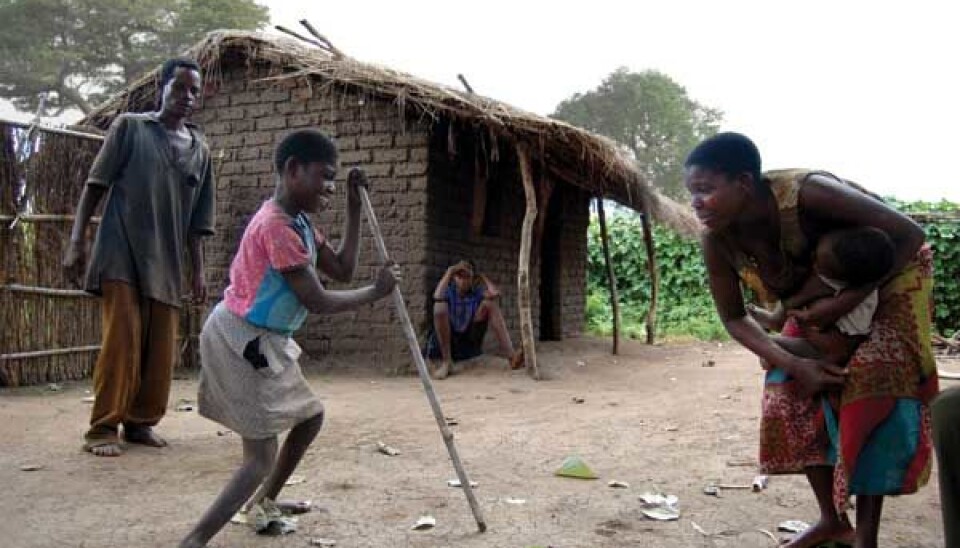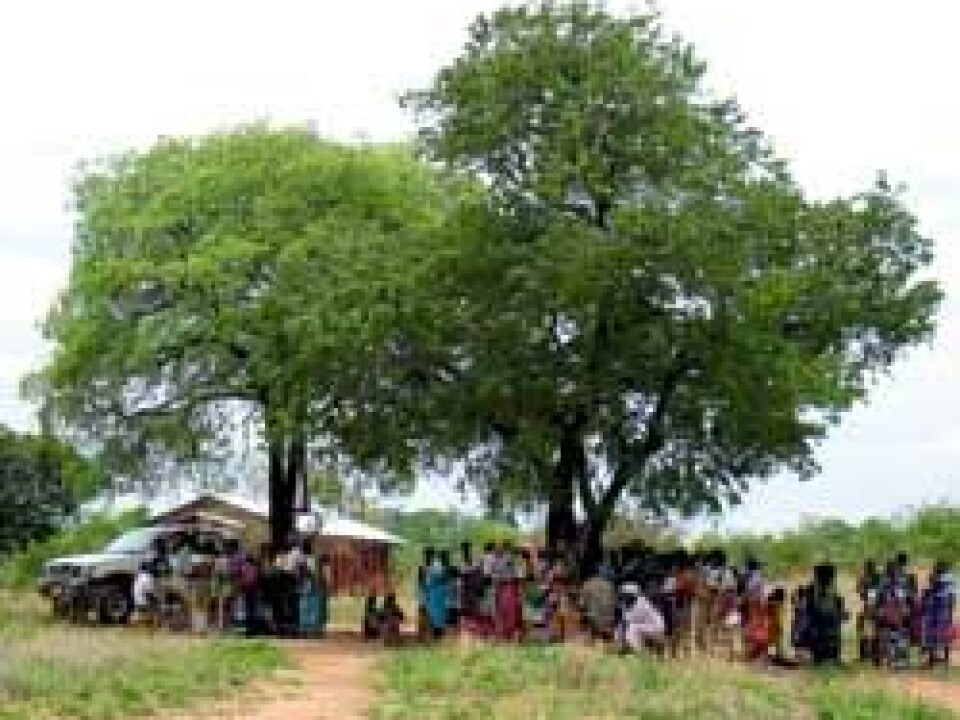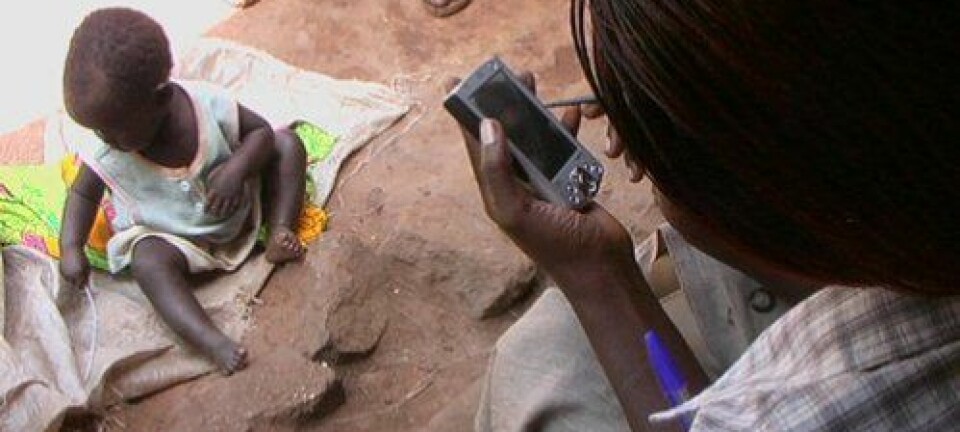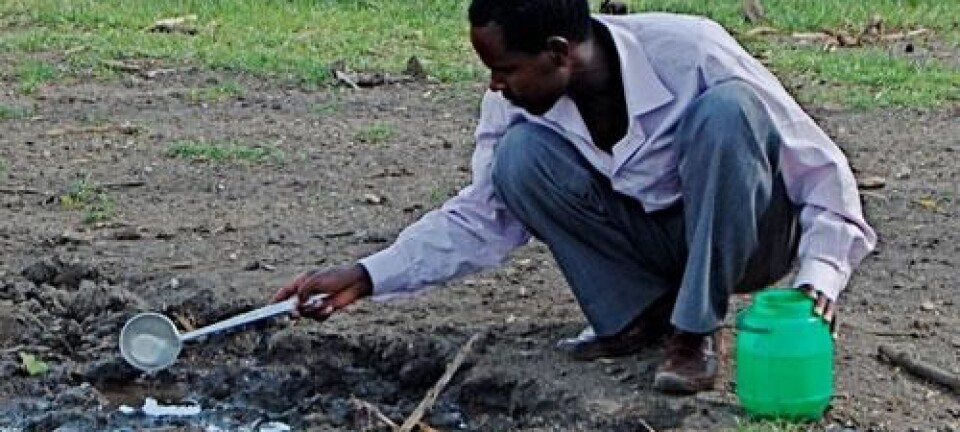An article from Norwegian SciTech News at SINTEF

Disabled persons overlooked by aid
Millions of people suffer permanent disabilities simply because they are poor. They are too often overlooked in the fight against poverty.
Denne artikkelen er over ti år gammel og kan inneholde utdatert informasjon.
Under a tropical sun and the cooling shade of trees in a Malawian village in southern Africa, a young teenage girl is learning how to walk. She has a history of illness that all began with a mosquito bite. She contracted malaria when she was a little girl, and her brain was affected. This eventually led to epilepsy which went untreated and later developed into cerebral palsy.
Ideally, malaria can be treated before it leads to such conditions. Patients can be cured if they have the means to get to the nearest clinic quickly, and assuming they can afford the medication.
But this girl’s family is destitute, as are the majority of people in her country. So she missed her chance of getting well.
This young girl is one of countless disabled people living in impoverished countries who are at risk of becoming forever trapped in a social and economic quagmire. Researchers call this “the vicious circle of poverty and disability” – an unforgiving chain of cause and effect about which Norwegian research has assisted in providing documentation.

Not only does poverty leads to disability. It is also difficult for people with permanent disabilities in underdeveloped countries to elevate themselves out of poverty.
Cause and effect
Traditional estimates indicate that ten per cent of the world’s population suffers from some form of disability, and that three quarters of all those suffering from a disability live in low-income countries. Many of them share the fate of the struggling Malawian girl – live with a disability caused by the problems of poverty.
Norwegian researchers have helped to demonstrate that this cause-and-effect mechanism is very active. Many people are permanently disabled because they are improperly nourished.
Others become invalids because their mothers were uneducated and received no guidance on a healthy pregnancy. Even more are disabled because they drive poorly maintained cars and get involved in traffic accidents. Those are just a few examples.

At the same time, poverty is also a consequence of loss of able-bodied function for many in underdeveloped lands.
Those the world forgot
Documentation assembled by pioneering researchers from SINTEF and the University of Oslo from southern Africa reveals systematic variations in living conditions that work to the disadvantage of the disabled (see the fact box).
And this in countries where most other people are also very poor. The figures demonstrate, among other things, that the disabled lack the same access to education as others.
In other words, and if we are to believe the experts, there is no lack of scientific theories as to why poverty and disability are linked in a vicious circle.
The disabled receive little benefit from ordinary aid programmes.
In spite of this, according to two experienced Norwegian researchers in this field, the world has failed to take these circumstances seriously. They are concerned with why this is the case. And not least, what it will all lead to.
Falling between the cracks
”The disabled in developing countries fall between the cracks in the fight against poverty,” says Chief Scientist Arne H. Eide at SINTEF.
Why is that?
“Among other things, because experts from different disciplines are isolated in their own bubbles within international aid programmes,” says Professor Benedicte Ingstad at the University of Oslo.
These two have been working to co-edit the first technical anthology exclusively dedicated to addressing the link between poverty and disability.
The book “Disability and Poverty – a Global Challenge” was released last year by the UK publishers The Policy Press. Contributors come from research centres in eleven countries. The two co-editors are concerned that the “voice” of the disabled goes unheard when major aid projects are being conceived.
Broaden your perspectives!
“Massive efforts are being made across the globe to eradicate world poverty. However, issues related to the disabled and other vulnerable groups receive very little consideration in this work,” Eide says.
"A recent evaluation shows that this is also true for Norwegian aid programmes. The disabled receive little benefit from the ordinary aid programmes. They are the losers in the struggle for work, services and food.”
According to the SINTEF researcher, global poverty will never be eradicated unless stand-ard aid mechanisms are supplemented with initiatives tailored to the most vulnerable groups.
“If aid projects continue as at present, we will be left with massive pockets of poverty made up of people who in one way or another can be defined as disabled,” he says.
Watching them become invisible
Eide is a social scientist who specialises in health and social policy, while Benedicte Ingstad is a social anthropologist, specialising in medical anthropology. They have been working closely together across their respective disciplines. He is one of the architects of the pioneering studies of living conditions in Africa, while she has been studying the disabled from a variety of cultures for three decades, and has been contracted by SINTEF to conduct field studies.
“Benedicte is among the first to demonstrate that it is poverty, above all else, which determines living conditions for the disabled in developing countries”, says Eide. “This is why we are proud to have her on the team”.
Ingstad has observed closely how the disabled are absent from the main objectives of the major aid programmes. She points to the photos from Malawi, taken during fieldwork she carried out together with SINTEF’s Lisbet Grut.
Many of the disabled they encountered in this impoverished country had been invalided by cerebral malaria – just like the girl in the photo. There were a variety of different triggers, but poverty was almost always the underlying cause.
Low priority science
Field interviews reveal stories of families who could not afford either medication or transport to the hospitals. Of clinics without drugs, and mosquito nets all too quickly ripped to pieces. And of a father who out of necessity used the mosquito net to fish for food for his family.
“Many of the disabled first developed epilepsy. If epilepsy remains untreated you can end up like the girl in the photo. But when the researchers examined the literature on malaria they found nothing about disability. All the malaria patients in the reports were defined as either healthy or deceased,” says Ingstad.
“If the malaria experts are to find out about the numbers of people become permanently disabled, they will have to travel to the villages and carry out surveys. But they probably don’t do this,” the researchers say.
“This is a good illustration of how issues related to disability are ignored. Many are aware that data on this subject is available, but it is not assigned priority,” Eide adds.
Demand for social services
Eide and Ingstad use two different approaches to study the conditions under which disabled people in underdeveloped countries live. He uses quantitative methods, while she applies a qualitative approach. The book they have co-edited also includes contributors from both camps.
In order to improve living conditions for the disabled in developing countries, Eide thinks it is important to expand a local social services structure that can provide locally adapted services.
Ingstad emphasizes that local special interest organizations must show greater concern at grass roots level – the destitute and disabled people living in the villages.
Both researchers regard it to be vital to introduce mechanisms that ensure the establishment of a sound economic foundation for people with disabilities.
Ingstad is inspired by what Botswana has achieved for its elderly population.
“They introduced an old age pension for everyone over 65,” she says. “Botswana is a relatively prosperous country, able to achieve such things,” she adds. “We observed that the pension raised the status of the elderly, and made the young more interested in living with them.”
Eide recognizes some challenges in the wake of South Africa’s experience with their disability benefit system.
”People will do almost anything to qualify for benefits, much more than we are used to here,” he says. “The entire village makes a great effort to find ways of being defined as disabled. It’s their best chance of obtaining financial security.”
One net
But not all that can be done has to be so expensive.
Some extra mosquito nets would probably be of great help to the villages of Malawi. It was here that Benedicte Ingstad heard about children who contracted malaria because the family only had one net, which the mother had hung above her own bed.
With only one net there was a great risk that someone in the family would fall ill. If the mother became sick there would be no one to take care of the children.


































